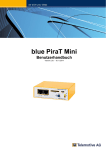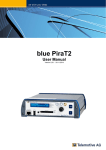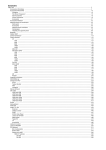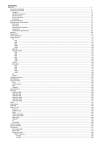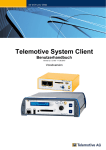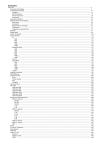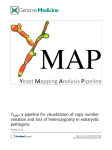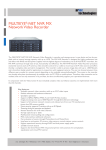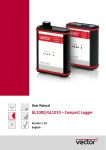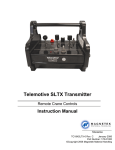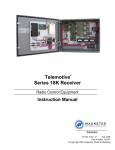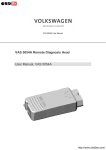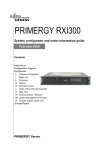Download blue PiraT Mini - User Manual
Transcript
blue PiraT Mini User Manual Version 2.1.1 – 26.11.2015 blue PiraT Mini - User Manual Version 2.1.1 – 26.11.2015 page 1 Table of contents 1. LICENSE AGREEMENT.......................................................................................................... 4 2. PRODUCT LIABILITY ............................................................................................................. 5 3. Overview ................................................................................................................................. 6 4. System requirements ............................................................................................................. 6 4.1. 5. 6. 7. Manuals ....................................................................................................................... 7 The blue PiraT Mini system ................................................................................................... 8 5.1. Accessories ................................................................................................................. 9 5.2. Implemented features ................................................................................................ 10 5.3. Additional features by optional licensees .................................................................. 11 The blue PiraT mini data logger ......................................................................................... 12 6.1. Model versions of blue PiraT Mini ............................................................................. 12 6.2. Front side of the blue PiraT Mini ................................................................................ 13 6.3. Rear side of the blue PiraT Mini ................................................................................ 13 Using the blue PiraT Mini .................................................................................................... 14 7.1. Function of the ON / Trigger button ........................................................................... 14 7.2. Function of the LEDs ................................................................................................. 15 7.2.1. ACTIVE LED (green) ............................................................................................. 15 7.2.2. STATE LED (rot) .................................................................................................... 15 7.3. ETH #1 / TSL and ETH #2 / TSL ............................................................................... 16 7.4. The USB port ............................................................................................................. 16 7.5. The SD card slot ........................................................................................................ 16 7.6. ETH #3 and ETH #4 .................................................................................................. 17 7.7. Multifunction - interface SUB-D 44-pol ...................................................................... 18 7.8. Multifunction - interface SUB-D 15-pol ...................................................................... 18 7.9. MOST150 interface:................................................................................................... 18 7.10. Default configuration of the network ports ................................................................. 19 7.10.1. 7.11. 8. 10. Resetting the logger to factory settings (from FW V02.00.01) .................................. 19 Starting the blue PiraT Mini................................................................................................. 20 8.1. 9. Resetting the network settings ............................................................................. 19 Download and installation of the Telemotive System Client...................................... 21 Adapter cables ..................................................................................................................... 23 9.1. blue PiraT Mini cable set CAN ................................................................................... 23 9.2. blue PiraT Mini cable set LIN ..................................................................................... 23 9.3. blue PiraT Mini cable set MOST150 .......................................................................... 24 9.4. blue PiraT Mini cable set FlexRay ............................................................................. 24 9.5. Note for serial measurements ................................................................................... 25 9.6. Adapter cable for Remote Control Voice (RCV) ........................................................ 25 Logging data ......................................................................................................................... 26 10.1. Setting markers.......................................................................................................... 26 10.1.1. Setting marker with an extern push button .......................................................... 26 10.2. Time stamp ................................................................................................................ 27 10.3. Automatic daylight savings adjustment ..................................................................... 27 blue_PiraT_Mini_UserManual_V2.1.1.doc blue PiraT Mini - User Manual Version 2.1.1 – 26.11.2015 11. 10.4. Standby mode............................................................................................................ 28 10.5. Memory space and level ............................................................................................ 29 10.5.1. Status Logger: OK ............................................................................................... 29 10.5.2. Status Logger: WARN .......................................................................................... 29 10.5.3. Status Logger: RING ............................................................................................ 29 10.5.4. Status Logger: MEM ............................................................................................ 30 10.5.5. Status Logger: NoSync ........................................................................................ 31 10.5.6. Status Logger: ERROR ........................................................................................ 31 The available connectors of blue PiraT Mini ..................................................................... 32 11.1. CAN interfaces ........................................................................................................... 32 11.1.1. The high-speed and low-speed operating modes................................................ 32 11.1.2. CAN data with 29Bit identifiers ............................................................................ 32 11.1.3. Recording contents .............................................................................................. 32 11.1.4. Sending CAN messages ...................................................................................... 33 11.1.5. LS-CAN and using a RC / RCV ........................................................................... 33 11.2. LIN interfaces ............................................................................................................. 34 11.2.1. LIN data blocks and time stamps ......................................................................... 34 11.2.2. LIN-Transceiver.................................................................................................... 34 11.2.3. Special frames and states .................................................................................... 34 11.3. Serial (RS232) interfaces .......................................................................................... 35 11.3.1. Segmentation of the serial data ........................................................................... 35 11.3.2. RS232 transceiver ............................................................................................... 35 11.4. FlexRay interfaces ..................................................................................................... 35 11.5. Analog / Digital Input.................................................................................................. 36 11.6. Digital Output ............................................................................................................. 36 11.7. Ethernet ..................................................................................................................... 36 11.7.1. 12. GNLogger.......................................................................................................... 36 11.7.1.2. UTF8 ................................................................................................................. 36 11.7.1.3. RAW .................................................................................................................. 36 11.7.1.4. UDP server........................................................................................................ 37 11.7.1.5. TCP server ........................................................................................................ 37 11.7.1.6. Ethernet spy mode ............................................................................................ 37 11.7.1.7. EsoTrace ........................................................................................................... 37 11.7.1.8. Camera (license required) ................................................................................ 37 11.7.1.9. DLT over Ethernet (license required) ................................................................ 37 11.8. MOST150 interface.................................................................................................... 38 11.9. ECL logging ............................................................................................................... 38 Conversion of recorded traces ........................................................................................... 39 Conversion format overview ...................................................................................... 39 Service and safety instructions .......................................................................................... 40 13.1. 14. Supported protocols & functions .......................................................................... 36 11.7.1.1. 12.1. 13. page 2 Safety advice ............................................................................................................. 40 Data sheet ............................................................................................................................. 42 blue_PiraT_Mini_UserManual_V2.1.1.doc blue PiraT Mini - User Manual Version 2.1.1 – 26.11.2015 15. page 3 Pin assignments and harnesses ........................................................................................ 44 15.1. Pin assignment - 44-pol SUB-D connector at blue PiraT Mini CAN .......................... 45 15.2. Pin assignment - 44-pol SUB-D connector at blue PiraT Mini LIN ............................ 46 15.3. Pin assignment - 15-pol SUB-D connector at blue PiraT Mini MOST ....................... 47 15.4. Pin assignment - 44-pol SUB-D connector at blue PiraT Mini FlexRay .................... 48 16. Abbreviations ....................................................................................................................... 49 17. List of figures ....................................................................................................................... 50 18. List of tables ......................................................................................................................... 51 19. Contact .................................................................................................................................. 52 blue_PiraT_Mini_UserManual_V2.1.1.doc blue PiraT Mini - User Manual Version 2.1.1 – 26.11.2015 1. page 4 LICENSE AGREEMENT Please read the license agreement of this license contract carefully, before you install the software. By the installation of the software you agree to the conditions of this license contract. This software-license agreement, in the following called as " license", contains all rights and restrictions for final users that regulate the use of the accompanying software, operating instructions and other documents, in the following called as "software". 1. This license contract is an agreement between Licensor and Licensee, who is being licensed to use the named Software. 2. Licensee acknowledges that this is only a limited nonexclusive license. This means that the licensee has no right to allocate sublicenses. Licensor is and remains the owner of all titles, rights, and interests in the Software. 3. The software is a copyright property of the Telemotive AG. The program or parts of it may not be further licensed to third parts, rented, sells, or be further marketed, otherwise, in any form without explicit Written approval by Telemotive AG. The user may neither change the software and their components, modify nor, otherwise, redevelopment or decompile in any form. 4. This Software is subject to no warranty. This software is sold as is, without any warranty. If at any time, a user changes their system, we hold no responsibility to change our software to make it work again. 5. This License permits Licensee to install the Software on more than one computer system, as long as the Software will not be used on more than one computer system simultaneously. Licensee will not make copies of the Software or allow copies of the Software to be made by others, unless authorized by this License Agreement. Licensee may make copies of the Software for backup purposes only. Licensee not entitled to transmit or to transfer the software or your rights from this License agreement. 6. LICENSOR IS NOT LIABLE TO LICENSEE FOR ANY DAMAGES, INCLUDING COMPENSATORY, SPECIAL, INCIDENTAL, EXEMPLARY, PUNITIVE, OR CONSEQUENTIAL DAMAGES, CONNECTED WITH OR RESULTING FROM THIS LICENSE AGREEMENT OR LICENSEE’S USE OF THIS SOFTWARE. 7. Licensee agrees to defend and indemnify Licensor and hold Licensor harmless from all claims, losses, damages, complaints, or expenses connected with or resulting from Licensee’s business operations. 8. Licensor has the right to terminate this License Agreement and Licensee’s right to use this Software upon any material breach by Licensee. duration of the license contract is indefinitely determined. 9. Licensee agrees to return to Licensor or to destroy all copies of the Software upon termination of the License Contract. 10. This License Agreement replaces and supersedes all prior negotiations, dealings, and agreements between Licensor and Licensee regarding this Software. 11. This License Contract is subject to german law. 12. If a regulation of this license contract is void by law, the validity of the remaining regulations is not affected. If there is such a regulation it will be replaced by a valid, according to the legal regulations and enforcable regulation with similar intention and similar economic consequences. 13. the license contract is effectve by delivery of the software of the licensor to the lecensee and/or by usage of the software by the licensee. This License contract is also valid without Licensor’s signature. 14. The license automatically goes out if the licensee does not agree to the license regulations described here or offend against the license regulations of this license contract. With ending the license contract the licensee is obliged to extinguish all copies of the software or to destroy it. 15. The Licensee sticks for all damages which originates the licensor from the injury of these license regulations. blue_PiraT_Mini_UserManual_V2.1.1.doc blue PiraT Mini - User Manual Version 2.1.1 – 26.11.2015 2. page 5 PRODUCT LIABILITY For all offers, sales and supplies do explicit apply the following conditions, even if the buyer, orderer and suchlike prescribes other conditions. Alterations are only valid, if they are agreed in writing. 1. The technical documentation is part of the products. The product liability and the product guarantee will be excluded, if contents and in particular the safety references and instruction for action of the documentation are not considered. 2. The products do belong to the group of testtools. by application of the equipment a disturbance ot the tested system cannot be completely excluded. For this reason, the warranty of a perfectly functioning system cannot be taken over by the manufacturer. Application of the product takes place at one’s own risk. 3. The liability of the substitution of damages according to §1 product liability law, is expressly excluded in the context of §9 product liability law, as far as compelling legal terms do not provide anything else. 4. In no event will the producer be liable for any indirect, incidental, special or consequential damages, including loss of profits, loss of revenues, loss of data, loss of use, any other economic advantage or damages caused by pretensions of third party towards the customer out of this agreement, under any theory of liability, whether in an action in contract, strict liability, tort (including negligence) or other legal or equitable theory. 5. The burden of proof is with the customer. 6. The Telemotive AG does ensure the legal warranty according to German law. Except for warranties expressly set forth in this agreement, any and all products are delivered “as is” and the producer makes and the customer receives no additional express or implied warranties. The producer hereby expressly disclaims any and all other warranties of any kind or nature concerning the products, whether express or implied, including without limitation, any warranty of title, merchantability, quality, accuracy, or fitness for a particular purpose or the customer’s purpose. The producer expressly disclaims any warranties that may be implied form usage of trade, course of dealing, or course of performance, except for the express warranties stated in this agreement. The products are provided with all faults, and the entire risk of satisfactory quality, performance, accuracy, and effort is with customer. The producer does not warrant that the Products will operate without interruption or be error free. 7. The Telemotive AG is justified to exchange defective goods against homogeneous acceptable ones or to eliminate the fault within an appropriate period. In this case a demand for redhibitory action or reduction of price expires. Warranty claims presuppose a due notice of defects. 8. Resale, transfer, donation, exchanges or the rental of the offered products at third party, is permitted without clearance of the Telemotive AG. 9. German Law is deemed to be as legal basis. © by Telemotive AG, 2015 Subject to errors and to technical changes as part of product improvement. blue_PiraT_Mini_UserManual_V2.1.1.doc blue PiraT Mini - User Manual Version 2.1.1 – 26.11.2015 3. page 6 Overview This user manual describes the administration of the newest generation of Telemotives data logger, called blue PiraT Mini. In this manual you find a description the hardware as well as the general functions and interfaces of the blue PiraT Mini. The configuration and converting of the logged traces is described in the user guide of the Telemotive System Client which is for blue PiraT Mini and blue PiraT2 too. This document refers to blue PiraT Mini firmware version 02.01.01 and blue PiraT Mini / blue PiraT2 client version 2.1.1. Some features depending on model and feature license or may not be available in older versions. Software updates are frequently available in the Telemotive ServiceCenter. (You’ll find the address under: Contact) Please make sure to use always current firmware and software versions. 4. System requirements Control Unit A Laptop or a PC is used to configure the devices by the Telemotive TSL client. This client also allows to save and convert the recorded data or to use them offline later. blue PiraT Mini The blue PiraT Mini is the newest data logger developed by Telemotive AG. It is the smallest data logger with this high capacity and flexibility due to the possibility to combine several devices to one complex network. The communication of bus systems and control units are monitored and relevant data can be recorded very precisely with the blue PiraT Mini. The collected data are stored on the blue PiraT Mini and can be downloaded to a PC or network storage. Telemotive System Client The software Client of the blue PiraT Mini is needed to configure the data logger and later to download or convert the recorded data. Index blue_PiraT_Mini_UserManual_V2.1.1.doc blue PiraT Mini - User Manual Version 2.1.1 – 26.11.2015 4.1. page 7 Manuals Apart from this manual we offer the main manuals for our client as well as for the different data logger generations in our ServiceCenter at https://sc.telemotive.de/bluepirat User manual for the Telemotive System client https://sc.telemotive.de/4/uploads/media/TelemotiveSystemClient_UserManual.pdf User manual for blue PiraT2 / blue PiraT2 5E https://www.telemotive.de/4/uploads/media/blue_PiraT2_UserManual.pdf User manual for blue PiraT Mini https://www.telemotive.de/4/uploads/media/blue_PiraT_Mini_UserManual.pdf Our licensed enhancements have own manuals which are stored in the ServiceCenter too. You will find a list of these enhancements in the user manuals in the chapter Additional features by optional licensees Index blue_PiraT_Mini_UserManual_V2.1.1.doc blue PiraT Mini - User Manual Version 2.1.1 – 26.11.2015 5. page 8 The blue PiraT Mini system The blue PiraT Mini is a data logger for the following interfaces: 8x HS-CAN 1x LS-CAN 8x LIN 1x MOST150 3x FlexRay a/b 5x serial 1x ECL ® 2x Broad-R-Reach 4x GB Ethernet/ TSL 1x USB 2.0 Device / Host 2x Analog-/Digital IN 2x Digital OUT 1x SD-Card Ethernet Figure 5.1: available interfaces The data logger can be mounted in a vehicle and due to his large storage capacity of the hard drive of currently aprox. 50 GB usable space, the blue PiraT Mini is able to support extensive test runs. After the data has been gathered, the data has to be downloaded via Ethernet. For the download and the conversion of the logging data a blue PiraT Mini software client is available. For the available conversion options to various trace file formats please have a look at chapter 12.1 Conversion format overview. The blue PiraT Mini is available in different versions (see Table 6.1 Model versions of blue PiraT Mini). The blue PiraT Mini is designed to create minimum interference with the vehicle’s bus systems and interfaces. The data logger listens to the data traffic without operating as a bus node. Additionally to the data re-cording functionality, the blue PiraT Mini provides online data processing functions: Simple CAN- and MOST-filters Custom-defined CAN-, LIN-, FlexRay-, Analog- and Digital message can trigger different actions. Index blue_PiraT_Mini_UserManual_V2.1.1.doc blue PiraT Mini - User Manual Version 2.1.1 – 26.11.2015 5.1. page 9 Accessories There are various accessories available for the blue PiraT Mini data logger: various adapter cables the blue PiraT Remote Control Voice, which additionally allows recording of voice note licenses which enhance the functionality of the blue PiraT Mini mounting clamp Please contact Telemotive sales for more information about these accessories. Manuals are available from the Telemotive Service Center. Index blue_PiraT_Mini_UserManual_V2.1.1.doc blue PiraT Mini - User Manual Version 2.1.1 – 26.11.2015 5.2. page 10 Implemented features Some special features are already implemented into blue PiraT Mini and can be used by the user. Feature Description Client library C++ library to control all functions of the logger Online compression Allows to compress all trace-data to save HDD space. ETH/GN logging recording of Ethernet trace data according to GN log protocol or as TCP/UDP raw data ESO Trace Logging of Ethernet ESO Trace data Conversion of recorded data into JSON format Ethernet Spy mode Logging of all Ethernet RAW data (promiscuous mode) Online Streaming C++ online Streaming library Online Monitor Showing selected data online in the client software during the recording Terminal Light allows to download recorded traces from several blue PiraT Mini simultaneously TSL TSL = Telemotive System Link TSL allows to connect different Telemotive data logger and use this network as an enhanced data logger Live View *Basic* Showing signals in a HTML-5 compatible browser on mobile devices like Smartphones, tablets or laptops over WIFI (licensed feature). The basic version is limited to10 mobile devices and 20 signals which can be shown. Saving to external media Logging trace data additional to external media like USB-sticks, external harddisks or SD cards. Data will be saved as offline data set and can be processed by the client or client library. Autosar System Template LIN Description File LDF Supporting of Autosar System Templates 3.2.2 for CAN and Flexray FIBEX 3.x Supporting of the Filed Bus Exchange Format (FIBEX) Version 3.x CAN DBC Supporting of the DBC-Communication Data base for CAN Supporting of LIN description files LDF Version 2.1 and 2.2 Table 5.1: Implemented features Index blue_PiraT_Mini_UserManual_V2.1.1.doc blue PiraT Mini - User Manual Version 2.1.1 – 26.11.2015 5.3. page 11 Additional features by optional licensees Additional features can be activated by purchasing and installing licenses. Currently, the following licensed features are available: Feature Description Complex Triggers Certain events (conditions on CAN-, LIN-, FlexRay-signals and analog and digital signals) can be programmed to be a trigger for certain actions (e.g. display of a message on the remote control or send a Can message) The standard configuration of the blue PiraT Mini contains 2 complex triggers. This license allows configuring up to 50 complex triggers. Remote Control Monitor Display of configurable CAN-, LIN-, FlexRay-signals and analog and digital signals at the remote control DLT logging This supports logging of Diagnostic Log and Trace (DLT) messages over Ethernet or serial (restricted) connections. Camera Link Video recording via video server or network cameras Wi-Fi Supporting wireless LAN GPS logging tracking of GPS data Measurements with CCP CAN Calibration Protocol Measurements with XCP Universal Measurement and Calibration Protocol. Currently, the functionality for Ethernet (XCP on Ethernet) and the CAN-bus (XCP on CAN) are available. MOST150 Streaming Logging MOST150 synchronous/isochronous data Signal based filtering The feature Signal based filtering provides the possibility to extract preconfigured signals directly from the recorded CAN-, LIN-, FlexRay-, analog and digital messages with an adjustable sampling frequency. These filtered signals can be stored directly to the logger and extract automatically in an MDF, CSV- or TMT-file. Live View *Enhanced* Showing signals in a HTML-5 compatible browser on mobile devices like Smartphones, tablets or laptops over Wi-Fi (licensed feature) or Ethernet. The enhanced version has no limitation to mobile devices or signals which can be shown. Broad-R-Reach Logging blue PiraT Mini supports recording of data over Broad-R-Reach Ethernet. (Note: Just available for blue PiraT Mini) Table 5.2: Additional features by optional licensees Index blue_PiraT_Mini_UserManual_V2.1.1.doc blue PiraT Mini - User Manual Version 2.1.1 – 26.11.2015 6. The blue PiraT mini data logger 6.1. Model versions of blue PiraT Mini page 12 The blue PiraT Mini is manufactured in various model versions to offer a wide range of connectivity to the different bus systems. The table below shows, which busses will be supported from the different models of blue PiraT Mini. Please consider that the using of Broad-R-Reach or TSL reduces the quantity of available Gbit Ethernet interfaces. Table 6.1: blue PiraT Mini data logger versions Index blue_PiraT_Mini_UserManual_V2.1.1.doc blue PiraT Mini - User Manual Version 2.1.1 – 26.11.2015 6.2. page 13 Front side of the blue PiraT Mini The blue PiraT Mini has two 1 Gbit Ethernet ports at the front side (ETH #1 / TSL & ETH #2 / TSL). On the front panel there are also the [ON / Trigger] button as well as LEDs for [Active] and [State], an USB-connector and the connector for SD cards Figure 6.1: Front panel of the blue PiraT Mini 6.3. Rear side of the blue PiraT Mini On the rear side are 2 more 1 Gbit-Ethernet ports (ETH #3 & ETH #4) and the 25-pol SUB-D multifunctional main connector for power supply and some of the interfaces [Interfaces]. Figure 6.2: Rear side of a blue PiraT Mini CAN On the rear side of blue PiraT Mini MOST the multifunctional main connector for power supply and some of the interfaces [Interfaces] is realized with an the 25-pol SUB-D connector. Additional you’ll find at the MOST logger a MOST150 Connector Figure 6.3: Rear side of a blue PiraT Mini MOST Index blue_PiraT_Mini_UserManual_V2.1.1.doc blue PiraT Mini - User Manual Version 2.1.1 – 26.11.2015 7. page 14 Using the blue PiraT Mini The next section describes the usage of the controls and connectors of the blue PiraT Mini. Figure 7.1: blue PiraT Mini front panel 7.1. Function of the ON / Trigger button The [ON / Trigger] button is used for these actions: action Short push in standby mode function Device wakes up Short push while working Setting a marker. The Trigger button has set an debouncing time of 335 ms. Long push while workin (about 3 to 5 sek.) Device goes to standby mode (shown by pulsing Active-LED Long push during boot sequence (~ 20 seconds) Setting the network settings to default (=DHCP server) Procedure: - Switching the logger on by a short pushing of the [On / Trigger] –button or switching on the power - Pushing the [On / Trigger] –button for about 20 sec. as soon as the [Active] LED is on (shown at State-LED by blinking 2 times) Note: The logger has to be restarted to set the settings by pushing the [On / Trigger] button for about 3 to 5 sec until the logger switches off. Table 7.1: Overview of the functions of the [ON / Trigger] button Index blue_PiraT_Mini_UserManual_V2.1.1.doc blue PiraT Mini - User Manual Version 2.1.1 – 26.11.2015 7.2. page 15 Function of the LEDs The blue PiraT Mini has 2 LEDs [Active] and [State] on his front side, which can have the following states. 7.2.1. ACTIVE LED (green) state off meaning device is off or in standby mode on device has started up and can be reached by the TSL client short blinking device is starting up pulsing device goes to standby mode Table 7.2: ACTIVE LED Maybe these states are overlain by a fast blinking when there’s traffic on one of the active interfaces (accept protocol based Ethernet logging) If an internal or external marker is set, the [Active] LED glows with full energy for a short time 7.2.2. STATE LED (rot) state off meaning No bug, device is working fine on Device in error state. If it is still reachable by the client the error can be found in the bug reporter. Rebooting required short blinking Overload oft he data logger, maybe loss of data. Information about lost data can be found in the bug reporter pulsing disk space full Table 7.3: STATE LED Index blue_PiraT_Mini_UserManual_V2.1.1.doc blue PiraT Mini - User Manual Version 2.1.1 – 26.11.2015 7.3. page 16 ETH #1 / TSL and ETH #2 / TSL The network ports at the front side, ETH #1 / TSL and ETH #2 / TSL, are for the communication between logger and client as well as for logging data. Further they can be used to combine blue PiraT Mini and blue PiraT2 data logger to a combined TSL system and synchronize these loggers. Warning: Don’t connect ETH #1 and ETH #2 directly to each other! 7.4. The USB port The front USB port can only be used in the host-mode. The port can be used for logging data to an external media or for connecting a Wi-Fi module to the logger. Wi-Fi can be used to get access to the logger over the client or to use the feature *Telemotive Live View*. USB storage: The USB storage has to be formatted in the FAT 16, FAT 32 or NTFS file format. You could connect USB flash drives and external hard drive up to a maximal supply current of 500mA. External power supplies must not be connected to the hard disk. 7.5. The SD card slot The blue PiraT Mini offers the possibility to store data directly to a SD card. The configuration of this feature is described in the Telemotive System Client manual. The SD card must be formatted with FAT32 with a minimum size of 4 GB. The following SD-Cards have been tested with the blue PiraT Mini: Vendor Description Size Type SanDisk Extreme PRO 64 GB SDXC Transcend Ultimate Speed 16 GB SDHC Transcend Ultimate Speed 32 GB SDHC Transcend Ultimate Speed 64 GB SDXC Kingston SDA3 16 GB SDHC Kingston SD10VG2 32 GB SDHC Intenso 3431470 32 GB SDHC Intenso 3431490 Professional 64 GB SDXC Hama Class 10 45 Mbps 16 GB SDHC Hama Class 10 45 Mbps 64 GB SDXC Extrememory 16 GB SDHC Extrememory Performance Class 6 HyPerformance Class 10 32 GB SDHC SanDisk Extreme 32 GB SDHC Table 7.4: Tested SD cards blue_PiraT_Mini_UserManual_V2.1.1.doc blue PiraT Mini - User Manual Version 2.1.1 – 26.11.2015 page 17 Attention: Removing the SD card without prior shutdown may result in the loss of all recorded data! If the SD card or USB disk is pulled in the operational state, the following problems exists: a) The logger is in an undefined state and will not record any data. Only after rebooting the device behaves as expected. b) The data on the SD card can then be unreadable when the SD card is removed during a write operation. If you turn off the blue PiraT Mini with the trigger button, you have 5 seconds to remove the disk before the logger can be reawakened. 7.6. ETH #3 and ETH #4 The network ports at the rear side, ETH #3 and ETH #4, can be used for logging data. Warning: Don’t connect ETH #3 and ETH #4 directly to each other! Index blue_PiraT_Mini_UserManual_V2.1.1.doc blue PiraT Mini - User Manual Version 2.1.1 – 26.11.2015 7.7. page 18 Multifunction - interface SUB-D 44-pol The blue PiraT Mini CAN / LIN / FlexRay contains depending on the model the following connections: Power supply Clamp 15 High-Speed-CAN Low Speed-CAN / Remote Control LIN FlexRay Seriell Analog-Digital IN Digital OUT Broad-R-Reach® KL 30 & KL 31 KL 15 HSCAN x LSCAN LIN x FR x Ch A / Ch B RS232 x KFZ ANA IN x / KFZ ANA COM KFZ DIG OUT x KFZ BRR x The pinning is described in chapter 15.1 Pin assignment - 44-pol Notice: The logger is protected against reverse polarity of the power supply. But devices which are connected to the logger can be damaged when the logger is connected in the wrong way. 7.8. Multifunction - interface SUB-D 15-pol The 15-pol SUB-D connector on a blue PiraT Mini MOST150 includes the interfaces for: Power supply High-Speed-CAN Low Speed-CAN / Remote Control Serial Analog-Digital IN Digital OUT KL 30 & KL 31 HSCAN x LSCAN RS232 x KFZ ANA IN x / KFZ ANA COM KFZ DIG OUT x The pinning is described in chapter 15.3 Pin assignment - 15-pol SUB-D connector at blue PiraT Mini MOST 7.9. MOST150 interface: The MOST150 interface is a standard connector for MOST fiber optic. Important: Maybe the MOST150 connector can’t be plugged when the 15-pol SUB-D connector is not locked before! Important: If the MOST connector is not used, the jack must be covered with a terminating plug. This prevents the sensitive fiber optic contacts from getting dirty. It also makes sure that the data logger does not start up unintentionally when e.g. strong sunlight falls onto the optical contacts. Index blue_PiraT_Mini_UserManual_V2.1.1.doc blue PiraT Mini - User Manual Version 2.1.1 – 26.11.2015 7.10. page 19 Default configuration of the network ports Important: The blue PiraT Mini‘s default setting is DHCP server and has to be connected by a Ethernet cable to your computer system. You can download the TSL client by typing this IP address into your web browser: http://192.168.0.233 7.10.1. Resetting the network settings If you have no access to the logger any more please follow the instructions of chapter *7.1 Function of the ON / Trigger button* to reset the network settings. Figure 7.2: blue PiraT Mini front panel 7.11. Resetting the logger to factory settings (from FW V02.00.01) Beside the possibility to reset the network settings, the blue PiraT Mini offers the possibility to reset the device to factory settings, if the logger is in error state and there’s no chance to connect to the logger any more. WARNING: Due to this reset to factory settings all data and licenses on the logger will be deleted. Needed licenses have to be saved to the logger again after this operation. An actual firmware version has to be flashed after this procedure! This is signaled by the error LED and an error “FC_FW_Update” at the client. To reset the logger to factory settings the logger hast o be unplugged from power supply. Then press the [ON / Trigger] button, plug the power supply and start the logger with pressed [ON / Trigger] button. The ACTIVE and STATE LEDs are pulsing for about 10 seconds. If you do nothing, the logger tries to startup normally in case of the button was pressed by mistake. But if the [ON / Trigger] button will be pressed fast multiple times in a row until the two LEDs are blinking alternately, the device starts to reset itself to factory settings. This operation will take some minutes and the blue PiraT Mini will switch off after that automatically. The blue PiraT Mini is set back to delivery status and you should flash an actual firmware version first to before you use the logger again. Index blue_PiraT_Mini_UserManual_V2.1.1.doc blue PiraT Mini - User Manual Version 2.1.1 – 26.11.2015 8. page 20 Starting the blue PiraT Mini Connect the blue PiraT Mini to the vehicle battery or a power supply via the power harness (red/+/clamp30 and black/GND/-/clamp31). Connect the Gigabit-Ethernet port ETH #1 with the Ethernet port of your computer by using a Ethernet cable. (Note: By default the blue PiraT Mini is configured as DHCP-Server!) Figure 8.1: Power connection When the power supply is switched on the logger will start automatically when you plug in the power supply. Is the blue PiraT Min in standby mode please press the [ON / Trigger] - button to start the device. To switch off the blue PiraT Mini please press the [ON / Trigger] button for about 5 seconds till the green LED starts pulsing. The boot sequence takes about 15 seconds until the logger is reachable by the TSL client. Data logging is starting much earlier. Figure 8.2: Switching on the blue PiraT Mini Index blue_PiraT_Mini_UserManual_V2.1.1.doc blue PiraT Mini - User Manual Version 2.1.1 – 26.11.2015 8.1. page 21 Download and installation of the Telemotive System Client Open your internet browser and enter the IP address 192.168.0.233 Figure 8.3: downloading the TSL client directly from the blue PiraT mini The connection between the logger and your computer system will be established. Please take care that the network settings of your network adapter are set to [Optain IP address automatically]. Please click on the blue PiraT Mini image to start the download of the client (~90MB) directly from the logger. Then choose [Save] to save the file to your local computer. The installation setup can be started by a double klick on the setup file. Follow the instructions, choose a destination directory and finalize the installation by pressing [Install]. Note: The needed Java Runtime Environment is included into the client and must not be installed separately. After successful installation you will find a Telemotive System Client icon on your desktop. Doubleclick the icon to start the application. Figure 8.4: Desktop symbol blue_PiraT_Mini_UserManual_V2.1.1.doc blue PiraT Mini - User Manual Version 2.1.1 – 26.11.2015 page 22 You can download the entire manual for the Telemotive System Client in our ServiceCenter. In the manual, all these operations are described: detailed description of the Client configuration of the data logger download of the recorded data conversion of the recorded data Firmware-/ License update Creating a bug report You can reach the manual by this direct link too: User manual for the Telemotive System client https://sc.telemotive.de/4/uploads/media/TelemotiveSystemClient_UserManual.pdf Index blue_PiraT_Mini_UserManual_V2.1.1.doc blue PiraT Mini - User Manual Version 2.1.1 – 26.11.2015 9. page 23 Adapter cables This section describes which adapter cables are available for the blue PiraT Mini. Telemotive AG offers adapter cables that connect to the multi-function connectors and split up its lines to separate connectors. 9.1. blue PiraT Mini cable set CAN Figure 9.1: blue PiraT Mini cable set CAN 9.2. blue PiraT Mini cable set LIN Figure 9.2: blue PiraT Mini cable set LIN blue_PiraT_Mini_UserManual_V2.1.1.doc blue PiraT Mini - User Manual Version 2.1.1 – 26.11.2015 9.3. page 24 blue PiraT Mini cable set MOST150 Figure 9.3: blue PiraT Mini cable set MOST150 9.4. blue PiraT Mini cable set FlexRay Figure 9.4: blue PiraT Mini cable set FlexRay Index blue_PiraT_Mini_UserManual_V2.1.1.doc blue PiraT Mini - User Manual Version 2.1.1 – 26.11.2015 9.5. page 25 Note for serial measurements Note: The blue PiraT Mini actively sends data on the “Tx” line if a protocol for the serial port is configured. The “Tx” line must only be connected to special devices that support those protocols. If the application is listening to a bidirectional serial communication of two devices, two serial ports of the blue PiraT Mini have to be used. The “Tx” lines must not be connected in this case. Device 1 RS232 #1 Rx blue PiraT Tx Rx RS232 #1 Tx RS232 #2 Rx RS232 #2 Tx Rx Tx Device 2 Figure 9.5: Listening to a bidirectional serial communication 9.6. Adapter cable for Remote Control Voice (RCV) Figure 9.6: Adapter cable for Remote Control Voice Index blue_PiraT_Mini_UserManual_V2.1.1.doc blue PiraT Mini - User Manual Version 2.1.1 – 26.11.2015 10. Logging data 10.1. Setting markers page 26 Interesting occurences can be marked by the [On / Trigger] button at the front panel or at the Remote Control / Remote Control Voice by setting a timestamp. When you are pressing this button, the data logger saves the current time to the hard drive as a marker. It is possible to configure the data logger to send a CAN message as an acknowledgement of setting a marker. Additionally, it is possible to define a CAN message that triggers a marker. In all cases, marker triggers are debounced. When downloading the data, the Client displays all markers in a data overview. In this data overview, the Client can be configured to transfer the data close to selected markers. 10.1.1. Setting marker with an extern push button Besides using the [On / Trigger] button, it is also possible using the digital inputs and *Complex triggers* function to realize an external [Marker] button. Important is to set the used interface active and set the [Sampling Interval] to 100 ms or more. Figure 10.1: Sampling interval Figure 10.2: setting Trigger with Digital Input blue_PiraT_Mini_UserManual_V2.1.1.doc blue PiraT Mini - User Manual Version 2.1.1 – 26.11.2015 page 27 The setting for the [Sampling Interval] is needed to debounce the external push button and be sure that only one trigger is set. The external push button can be connected to the power supply of the car and the Digital In mentioned above. Note: Digital IN and Analog IN are combined to one wire at blue PiraT Mini. Please connect the ground for Analog IN when you use an external push button. 10.2. Time stamp Usually the recorded messages will get a time stamp at the end of each received message. Only for the serial interface (RS232) the start of the transfer will be used as timestamp. Trace Data MOST25 MOST150 ECL CAN LIN FlexRay Ethernet RS232/422Digital Accuracy 1 µs 1 µs 1 µs 1 µs 1 µs 1 µs 100 ms 1 ms Start End x x x x x x x x Table 10.1: Time Stamp 10.3. Automatic daylight savings adjustment If it is required that the data logger automatically adjusts for daylight savings, it is necessary to en-able this option and to set the correct time zone in the data logger configuration (see section Fehler! Verweisquelle konnte nicht gefunden werden.). Please note the following issues: If the automatic adjustment for daylight savings is deactivated, the configured time zone is generally not critically important. It is still recommended to rather adapt the time zone than to readjust the data logger's time when moving between time zones because the data logger internally uses the location-independent universal time (UTC). Only changing the time zone avoids trace data with overlapping time stamps When converting trace data to the target file formats, the time zone that was configured at the time of data download is used. If a data set "A" is recorded in a time zone "A" and the data logger's time zone is changed to "B" before data download, then the final time stamps will reflect the time of time zone "B". To avoid problems when moving within time zones, make sure to delete all data on the data logger after changing the time zone or after changing the data logger's clock by one or more hours. Index blue_PiraT_Mini_UserManual_V2.1.1.doc blue PiraT Mini - User Manual Version 2.1.1 – 26.11.2015 10.4. page 28 Standby mode The table below shows, which busses or signals are monitored for keeping the logger alive and which busses or signals are able to wake up the logger. Interface Keep alive Wake up Configurable Comment Light on MOST150 ECL High Speed CAN Low Speed CAN LIN FlexRay Serial RS232 Ethernet 1GBit W / A: On / Off W / A: On / Off W / A: On / Off W / A: On / Off W / A: On / Off W / A: FlexRay1a-3b W / A: On / Off A: On / Off, Alive time Analog In Digital In 1 Digital In 2 Digital In 3-5 USB Remote Control [Trigger] Button Wi-Fi clamp 15 Time: General/Standby Via [Trigger] button Table 10.2: Standby - [W= wake up A= keep alive] Index blue_PiraT_Mini_UserManual_V2.1.1.doc blue PiraT Mini - User Manual Version 2.1.1 – 26.11.2015 10.5. page 29 Memory space and level About the ring buffer, and other options such as the protection of areas around markers, the characteristics of the logger can be configured what to do when the internal memory is full. The following status messages can occur during operation of the data logger, it will also be displayed on the optional Remote Control (RC) / Remote Control Voice (RCV) . 10.5.1. Status Logger: OK Everything is OK. On the disk is enough free space to record all incoming data. blue PiraT Mini: State LED is off RCV: Table 10.3: Status Logger: OK 10.5.2. Status Logger: WARN Warning, but does not affect the data recording. 10.5.3. Status Logger: RING Memory is full, buffer mode is active. The buffer is active and filled more the 95 %. Older data will be deleted to save space for newer data. blue PiraT Mini: State LED is off RCV: Line 3 shows the level of the ring buffer on the internal memory Table 10.4: Status Logger: RING blue_PiraT_Mini_UserManual_V2.1.1.doc blue PiraT Mini - User Manual Version 2.1.1 – 26.11.2015 10.5.4. page 30 Status Logger: MEM Internal memory is nearly full, no more data will be stored soon. Case 1: The ring buffer is enabled and more than 95 % full (as Status RING), in addition over 90 % of the trace files are protected. Case 2: The ring buffer is disabled and filled to more than 95%. When ring buffer mode is disabled all trace files are implicitly protected. blue PiraT Mini: State LED is off RCV: Line 3 now shows the level of the ring buffer with protected files. In the display below we see that the ring buffer is filled to 91% with protected, and to 9% with non-protected files. Till now the oldest unprotected files will be cleared to make way for new space. Table 10.5: Status Logger: MEM Case 3: The ring buffer is disabled and the memory to 100% full. Case 4: The ring buffer is enabled and the memory to 100% full with protected files In both cases, the data recording is stopped because no files can be deleted to make way for new space. blue PiraT Mini: State LED is pulsing every second RCV: The third line shows flashing that the storage medium is full. For this, the 3rd line is faded in and out every second. Table 10.6: Status Logger: Memory full blue_PiraT_Mini_UserManual_V2.1.1.doc blue PiraT Mini - User Manual Version 2.1.1 – 26.11.2015 10.5.5. page 31 Status Logger: NoSync TSL or master / slave loggers are not synchronized, the data recording is not affected. 10.5.6. Status Logger: ERROR Error in the logger, the data record is not guaranteed blue PiraT Mini: State LED is pulsing every second RCV: In the second line of the status * ERROR * flashes every second. Table 10.7: Status Logger: ERROR Index blue_PiraT_Mini_UserManual_V2.1.1.doc blue PiraT Mini - User Manual Version 2.1.1 – 26.11.2015 11. page 32 The available connectors of blue PiraT Mini All available interfaces will be described step by step in the next chapter. 11.1. CAN interfaces The blue PiraT Mini is able to record data in compliance with the CAN specification 2.0a (11 Bit identifier) and 2.0b (29 Bit identifier). 11.1.1. The high-speed and low-speed operating modes Depending of the model, the blue PiraT Mini has different numbers of high and low speed CAN interfaces. It is not possible to change a CAN interface from low to high speed or vice versa. Each type is using different transceivers. The electrical behavior of the low-speed and the high-speed CAN is different, hence, the low-speed CAN port of the blue PiraT Mini should not be connected to a high-speed CAN bus and vice versa. Both operating modes use differential signals (CANH, CANL). For the correct data recording, all nodes of the bus must have a common reference potential. The blue PiraT Mini uses the connection *clamp 31* as a reference potential. The lines of the high-speed CANs are terminated with a high resistance. Transceiver chip Terminating resistor Baudrate Supported identifiers (SW) Disabling of acknowledge Time stamps Low-speed CAN Philips TJA1055 12k 50 kBit/s - 125 kBit/s 11 and 29 Bit possible at the end of the message High-speed CAN Philips TJA1041A 2k6 50 kBit/s - 1 MBit/s 11 and 29 Bit possible at the end of the message Table 11.1: Technical data of CAN recording 11.1.2. CAN data with 29Bit identifiers The blue PiraT Mini can also log CAN data with 29 Bit identifiers. You don’t have to configure anything. All the CAN data will be logged as they are available on the CAN bus. It is also possible to log CAN messages mixed with 11 Bit and 29 Bit identifiers. 11.1.3. Recording contents The blue PiraT Mini is able to record the following error states of the CAN bus: Stuff error Format error Acknowledge error Bit 0/1 error CRC error Overrun These error states are only included in the Telemotive file formats. After reaching a certain number of errors (50 errors), the recording of error states is interrupted until reception of the next successful CAN message to avoid an overload of the recorded data. Index blue_PiraT_Mini_UserManual_V2.1.1.doc blue PiraT Mini - User Manual Version 2.1.1 – 26.11.2015 11.1.4. page 33 Sending CAN messages If the blue PiraT Mini sends a CAN message, it is shown twice in the traces. The first message indicates the transmit request of the data logger and the second message indicates the actual transmission of the message. In the CANoe file format, these messages are indicated as "TxRq" and "Tx", respectively. The transmit request messages are not included in file format that don't support them. 11.1.5. LS-CAN and using a RC / RCV The Low Speed CAN (LS-CAN) as well can be used for connecting a Remote Control / Remote Control Voice. If you use a RC / RCV the logger will trace no data on LS-CAN! This will be shown in the TSL client as a warning: Figure 11.1: LS-CAN used for RC / RCV Index blue_PiraT_Mini_UserManual_V2.1.1.doc blue PiraT Mini - User Manual Version 2.1.1 – 26.11.2015 11.2. page 34 LIN interfaces The blue PiraT Mini is able to record data compliant to the LIN specification V1.3 V2.0 and V2.1. The data logger does not actively appear as a bus member. Sending LIN messages is currently not supported. channels Transmission Rate Transmitter Status Terminating resistor bis zu 2 1200, 2400, 4800, 9600, 19200, 20000 Baud TJA 1020 Parity BITS; format Check for Header, CheckSum for Header and Payload 30 kOhm Table 11.2: LIN 11.2.1. LIN data blocks and time stamps Each LIN message gets a time stamp, which marks the end of the message. If the data logger receives LIN data without a valid header, it creates blocks containing the invalid data. The maximum block size is 10 bytes. A block is also concluded after a timeout, which is three times the transmission time of a LIN character. 11.2.2. LIN-Transceiver The blue PiraT Mini uses the LIN transceiver TJA1021 by NXP (former Philips Semiconductor). Supported baud rates are in the range from 1200 to 20000 Baud. Automatic baud rate detection is currently not supported. The LIN interface is configured as a slave device with a terminating resistor of 30 kΩ. 11.2.3. Special frames and states Additionally to the normal frame data, the following information is recorded: Wakeup Frames Checksum Errors Index blue_PiraT_Mini_UserManual_V2.1.1.doc blue PiraT Mini - User Manual Version 2.1.1 – 26.11.2015 11.3. page 35 Serial (RS232) interfaces Channels: Data Bits: Stop Bits: Parity: 5x RS232 5, 6, 7, 8 1, 2, 1.5 None, odd, even Table 11.3: Serial Port The blue PiraT Mini supports only the RS232 specification. 11.3.1. Segmentation of the serial data The received serial Bytes are clustered into data blocks separately for each channel. Each block is finalized after a certain time or if it has reached a certain maximum size. The time is 30ms to 60ms, depending on the channel. The maximum size is 49 to 80 bytes. A time stamp is assigned to each block when it is finalized. 11.3.2. RS232 transceiver The threshold voltages for data reception are the usual RS232-defined values. A logical „1“ is recognized for input voltages smaller 0 Volts, a logical „0“ for input voltages higher than 3 Volts. 11.4. FlexRay interfaces The blue PiraT Mini is able to record FlexRay bus data according to the FlexRay specification 2.1A. The data logger records all valid and also invalid static and dynamic frames of the two FlexRay channels, including ‘a’ and ‘b’, independently if the FlexRay bus is in a synchronous or asynchronous state. Channels: Max. Bit rate: Frames Transceiver: 3x (a + b) 10 MBit/s Static, Dynamic, Null Sync, Startup AS8221 Table 11.4: Technical data of the FlexRay module Attention: For every measurement with FlexRay the line must be separated and lead through the blue PiraT Mini. Mandatory 2 interfaces (a & b ) must be used in each measurement. Turning off the blue PiraT Mini thereby causes no interruption of the FlexRay line. Index blue_PiraT_Mini_UserManual_V2.1.1.doc blue PiraT Mini - User Manual Version 2.1.1 – 26.11.2015 11.5. page 36 Analog / Digital Input The blue PiraT Mini has three analog and three digital inputs, whereas the first channel is located in the logger and records the input voltage. The measuring range is between 0 V and +20 V, the accuracy is 3 %. The sampling rate is adjustable from 1 ms to 100 s. The switching threshold for the digital input is 7 V ±0,2 V. See Chapter 14 Data sheet. 11.6. Digital Output The blue PiraT Mini models CAN, FlexRay and LIN have two digital outputs. The output current is up to 2 A. 11.7. Ethernet All versions of the blue PiraT Mini data logger are able to log Ethernet data. All data loggers have two 1 GBit Ethernet ports with RJ45 connector on the front and 2 more at the rear side. The two interfaces ETH #1 / TSL and ETH #2 / TSL can be used to connect the data logger to the PC and for the TSL (Telemotive System Link) connection. At blue PiraT Mini CAN ETH #3 and ETH #4 can be configured and used either as IEEE 802.1 Ethernet, or as BroadR-Reach® when you have installed the appropriate license. 11.7.1. Supported protocols & functions The following chapter gives an overview of the available protocols. When a protocol requires a license, this will be marked. 11.7.1.1. GNLogger For connecting a standard TCP connection (open socket connection) will be used. Therefore the blue PiraT Mini is a TCP Slave Device. GNLogger is a proprietary serial protocol used for some ECU diagnosis. 11.7.1.2. UTF8 When using the UTF8 data transmission over TCP, the blue PiraT Mini will work as a TCP Slave device. Therefore the blue PiraT Mini will initiate a TCP connection to a TCP server by using an open socket connection (you can configure the IP/Port of the server via the TSL client software). By using UTF8 data transmission the logger will write a timestamp after every detected Linefeed (LF) from the incoming data. If the connection is getting lost, it will take about 5 seconds to build up a new connection for logging data again. 11.7.1.3. RAW When using the raw data transmission over TCP the blue PiraT Mini will be a TCP-Slave device. Therefore the blue PiraT Mini will initiate a TCP connection to a TCP server by using an open socket connection (you can configure the IP/Port of the server via the TSL client software). blue_PiraT_Mini_UserManual_V2.1.1.doc blue PiraT Mini - User Manual Version 2.1.1 – 26.11.2015 page 37 When using raw data transmission, every data package up to 40 kBytes is getting a time stamp and will be written on the logger. If the connection is getting lost, it will take about 5 seconds to build up a new connection for logging data again. 11.7.1.4. UDP server The blue PiraT Mini can be configured as an UDP server by setting up an IP address and port number. A Slave device can build up a connection to the blue PiraT Mini. The blue PiraT Mini logs raw data packages up to 40kBytes and write them down with a time stamp. There is no configurable Debug Level. If the connection is getting lost, it will take about 5 seconds to build up a new connection for logging data again. 11.7.1.5. TCP server The blue PiraT Mini can be configured as a TCP server by setting up an IP address and port number. There is an adjustable timeout, the connection will be terminated if no data arrives. This appears as a message in the trace file. The blue PiraT Mini as a TCP server accepts TCP data packets, TCP multicast and TCP broadcast packets. If the connection is getting lost, it will take about 5 seconds to build up a new connection for logging data again. 11.7.1.6. Ethernet spy mode By using the Ethernet spy mode it is possible to log the whole Ethernet data (promiscuous mode). More information can be found in the TSL client manual. 11.7.1.7. EsoTrace By using the EsoTrace mode it is possible to log data in the EsoTrace protocol. For more information please have a look in the TSL client manual. 11.7.1.8. Camera (license required) If you use Camera license on the data logger, it is possible to connect up to 4 Ethernet webcams to the blue PiraT Mini. After connecting the blue PiraT Mini is able to log MPEG4 video streams. For more information please have a look at the “Camera UserGuide”. 11.7.1.9. DLT over Ethernet (license required) If you use a DLT license on the data logger, it is possible to connect up to 8 ECU for logging their DLT messages. More information about logging DLT messages can be found in the DLTlogging_UserGuide Index blue_PiraT_Mini_UserManual_V2.1.1.doc blue PiraT Mini - User Manual Version 2.1.1 – 26.11.2015 11.8. page 38 MOST150 interface The blue PiraT Mini MOST data logger is able to log messages from the MOST150 bus of the following types: Status: MPR (Maximum Position Register), MDC (MOST Data Channel), Light on, System Lock Flag, Shut Down Flag, Ring Lock Flag, Open Ring / Multi Master Flag, Node Position Changes of the states are only logged when te state is changing. Control: Control Messages 1 Streaming * : Synchronous and isochronous data Packet: MDP (MOST Data Packet) MEP (MOST Ethernet Packet) Filter: Control Messages on/off, Packet on/off, MDP on/off, MEP on/off, Status on/off, MDP Transmit and Receive Address, Packet Length, MEP Receive Address, Message Length *1 requires a separate license MOST150 Streaming Table 11.5: MOST150 data Logging The SMSC SpyNIC MOST150 is used to provide the MOST150 traffic data. The data logger is not an active part of the bus system because it is working in a spy mode. The device is able to log messages immediately after wake up. Before the logging data are saved on the internal memory, they are buffered in a ring buffer. In the case of a data rate peak, which exceeds the storage rate of the internal memory, storage of data is still possible. If the MOST150 data rate is permanent higher than the maximum storage rate, the data logger will stepwise deactivate channels: first the MEP- and MDP-channel, then the control channel and at last the status messages. To ensure logging of maximum continuous data blocks a hysteresis is implemented. Before logging again MEP- and MPD- messages the ring buffer data has to be fully stored on the internal memory. Before starting the logging of the MEP- and MDP- messages again the system sends a “Lost Message” note. This message contains information about how many messages of which type were rejected. 11.9. ECL logging Currently the ECL (Electrical Control Line) is only supported in conjunction with MOST150. In general, the ECL is a slow LIN bus. The following ECL messages will be recorded: EWU (Electrical Wake–Up) STWU (System Test Wake-Up) STP (System Test Parameters) STR (System Test Results) Undefined Pulse blue_PiraT_Mini_UserManual_V2.1.1.doc blue PiraT Mini - User Manual Version 2.1.1 – 26.11.2015 12. page 39 Conversion of recorded traces All trace data will be recorded internally in the proprietary Telemotive TMT format (*.tmt). If the recorded trace data will be downloaded and sorted, the data will be converted to an extended TMT format (*.xtmt). The client provides the possibility to convert the internal format in other formats, to make the data readable or to prepare them to import them into available analyzing tools. For more informations about the file formats and an detailed manual for conversion please look at the *Telemotive System Client_UserManual* which you can download from the Telemotive ServiceCenter. 12.1. Conversion format overview The table below show which data can be converts to other formats. The last row shows if the marker can be integrated into the data (x) or only be set by using pseudo CAN- or MOST messages (x*). Table 12.1: Conversion formats Index blue_PiraT_Mini_UserManual_V2.1.1.doc blue PiraT Mini - User Manual Version 2.1.1 – 26.11.2015 13. page 40 Service and safety instructions Note according to standard EN55011:2009 The data logger is used in an industrial environment. Due to the behavior of conducted as well as radiated disturbances it possibly can be difficult to ensure electromagnetic compatibility in other environments. Cleaning: The data logger should only be cleaned with a clean, slightly dampened cleaning cloth with water. Other cleaning supplies such as benzine, alcohol, etc. may not be used. Maintenance: The data logger is maintenance-free. The customer is not allowed to open the housing. Unauthorized modifications will void the warranty. Fuse: In case of an error the customer may change the fuse on the harness or externally accessible fuses only. The fuse may be replaced only with a fuse of the same type and current rating. Disposal: The disposal of the device must be in accordance to statutory provisions. 13.1. Safety advice Installation instructions: The data logger should only be installed in the six axes. Operating temperature: The device must not be operated outside of the specified temperature range. It is important to ensure adequate ventilation. The data logger must not be placed too close to walls or other equipment. The data logger must not be stacked together with other components on each other, unless proper ventilation is ensured and the device should be used in ambient temperatures of more than 25 ° C. Storage conditions: The data logger must be stored only in the range of -40 ° C to 85 ° C. Condensation: The device must not be switched on directly, if it is brought from a cold environment into a room with normal ambient conditions. Environmental conditions: The device must not be used outdoors or in adverse environmental conditions such as moisture, high humidity or dust. Furthermore, an operation of the device is not allowed in fire hazardous or explosive gases. Cable sets: When inserting the cable sets, only a small effort may be applied. When you feel an increased resistance while inserting the cable set, the correct alignment of the pins should be checked. It may only be used the original Telemotive components. Other components such as special cable sets have to be prepared strictly according to the pin assignment in the user guide, which always should consist an extra fuse in the wiring harness. Three pins with the names KL30 and KL 31 are interconnected for the voltage supply of the data logger. Caution: A short circuit between the KL30 and KL31 on the plug may lead to the destruction of the data logger! blue_PiraT_Mini_UserManual_V2.1.1.doc blue PiraT Mini - User Manual Version 2.1.1 – 26.11.2015 page 41 The maximum value of the power supply must not exceed 30 V. In case of overvoltage, the device can be destroyed and will void the warranty. Mounting: The data logger has to be fixed in laboratory setups and especially in automobiles, so that it is secured against falling, slipping and skidding around. Positioning of the antenna: During operation of the data logger in an automobile, the antennas which are connected to the data logger must not be located outside the vehicle. Mechanical action: ++++++++++++++ Operation environment ++++++++++++++ Height -300 to 5.500 m Shock at 2 ms half sinusoidal wave 300 G Vibration sinusoidal wave 3 G (10 - 50 Hz) 2,5 G (50 - 2000 Hz) 2 G (200 - 5000 Hz) ++++++++++++++ Out of operation environment ++++++++++++++ Height -300 to 12.000 m Shock at 1 ms half sinusoidal wave 800 G Vibration sinusoidal wave up to 5 G (10 - 500 Hz) Index blue_PiraT_Mini_UserManual_V2.1.1.doc blue PiraT Mini - User Manual Version 2.1.1 – 26.11.2015 14. page 42 Data sheet General data blue PiraT Mini CAN blue PiraT Mini LIN blue PiraT Mini MOST blue PiraT Mini FlexRay Nominal power supply voltage 13,8V 13,8V 13,8V 13,8V Power supply voltage 5 to 30 V ( needs up to >7V at system start) 5 to 30 V ( needs up to >7V at system start) 5 to 30 V ( needs up to >7V at system start) 5 to 30 V ( needs up to >7V at system start) yes yes yes Yes yes yes yes yes 300mA (@ 13,8 V) 300mA (@ 13,8 V) 300mA (@ 13,8 V) 300mA (@ 13,8 V) < 400mA (@ 13,8 V) < 400mA (@ 13,8 V) < 400mA (@ 13,8 V) < 400mA (@ 13,8 V) < 1mA < 1mA < 1mA < 1mA TBD TBD TBD TBD TBD TBD TBD TBD operating temperature -40°C to +70°C -40°C to +70°C -40°C to +70°C -40°C to +70°C Storage temperature -40°C to 85°C -40°C to 85°C -40°C to 85°C -40°C to 85°C Weight (ca.) 250 g 250 g 250 g 250 g Power Management CAN LIN MOST FlexRay Startup time from standby to full operation <15s <15s <15s <15s Start of logging starting from standby CAN, LIN, Seriell, Analog, Digital < 60 ms CAN, LIN, Seriell, Analog, Digital < 60 ms CAN, LIN, Seriell, Analog, Digital, MOST < 60 ms CAN, LIN, Seriell, Analog, Digital, FlexRay < 60 ms + ca. 500 ms + ca. 500 ms + ca. 500 ms + ca. 500 ms < 120 ms < 120 ms < 120 ms < 120 ms Configurable time at no bus load CAN-HS, CAN-LS, LIN, Serial, KL 15, Trigger button Configurable time at no bus load CAN-HS, CAN-LS, LIN, Serial, KL 15, Trigger button Configurable time at no bus load CAN-HS, CAN-LS, LIN, Serial, KL 15, Trigger button, MOST Configurable time at no bus load CAN-HS, CAN-LS, LIN, Serial, KL 15, Trigger button, FlexRay CAN LIN MOST FlexRay (105 x 85 x 33 mm) Push button to start the logger, set marker or to shut down the logger. yes (105 x 85 x 33 mm) Push button to start the logger, set marker or to shut down the logger. (105 x 85 x 33 mm) Push button to start the logger, set marker or to shut down the logger. (105 x 85 x 33 mm) Push button to start the logger, set marker or to shut down the logger. yes yes yes CAN LIN MOST FlexRay Front connectors 2 x Gbit Ethernet, SDCard, Mini-USB 2.0 2 x Gbit Ethernet, SDCard, Mini-USB 2.0 2 x Gbit Ethernet, SDCard, Mini-USB 2.0 2 x Gbit Ethernet, SDCard, Mini-USB 2.0 Rear connectors 2 x GBit ETH SUB-D 44-pol: Power supply, 8 x HSCAN, 1 x LS-CAN, 2 x LIN, 5 x Serial, 2 x Analog input, 2 x Digital input, 2 x Digital output, 2 x OABR 2 x GBit ETH SUB-D 44-pol: Power supply, 2 x HSCAN, 1 x LS-CAN, 8 x LIN, 5 x Serial, 2 x Analog input, 2 x Digital input, 2 x Digital output 2 x GBit ETH SUB-D 15-pol: Power supply,, 1 x HSCAN, 1 x HS/LS-CAN (mux), 3 x Serial, 1 x Seriell / ECL (mux), 2 x Analog input, 2 x Digital input 2 x GBit ETH SUB-D 44-pol: Power supply,, 4 x HSCAN, 1 x LS-CAN, 2 x LIN, 5 x Serial, 2 x Analog input, 2 x Digital input, 2 x Digital output Reverse polarity protection of the supply voltage Resistance to shortcircuiting power consumption / operating (typ.) power consumption / operating (peak.) power consumption / standby power consumption / Idle Mode power consumption / suspend mode Start of logging full start Start of logging Ethernet / OABR, AutoNeg off Standby Mode Wakeup by Case Size (ca.) Bedienelemente LEDs for State / Active connectors blue_PiraT_Mini_UserManual_V2.1.1.doc blue PiraT Mini - User Manual Version 2.1.1 – 26.11.2015 Data recording Storage type Recording modes Timestamp accuracy MOST 150 recording page 43 CAN LIN MOST FlexRay 58 GByte Flash intern 58 GByte Flash intern 58 GByte Flash intern 58 GByte Flash intern SD-Card SD-Card SD-Card SD-Card USB flash drive USB flash drive USB flash drive USB flash drive Normal, Ringpuffer 1µs Normal, Ringpuffer 1µs Normal, Ringpuffer 1µs Normal, Ringpuffer 1µs CAN LIN MOST FlexRay MDP MOST data packets, MEP MOST Ethernet packets, control channel, Network Status, MOST streaming (Synchron / Isochron) (option) Light on/off, Lock on/off MDP filter (source address, target address), MEP filter (target MAC address) Channels Status recording Filter CAN recording CAN LIN MOST FlexRay Transceiver 8 High speed, 1 Low speed bis zu1000000 Baud bei HS-CAN up to 125000 Baud at LS-CAN TJA1041A, TJA1055T 2 High speed, 1 Low speed bis zu1000000 Baud bei HS-CAN up to 125000 Baud at LS-CAN TJA1041A, TJA1055T 1 High speed, 1 High/Low speed (mixed) bis zu1000000 Baud bei HS-CAN up to 125000 Baud at LS-CAN TJA1041A, TJA1055T 4 High speed, 1 Low speed bis zu1000000 Baud bei HS-CAN up to 125000 Baud at LS-CAN TJA1041A, TJA1055T Filter CAN ID Filter CAN ID Filter CAN ID Filter CAN ID Filter Status recording Error frames Error frames Error frames Error frames CAN LIN MOST FlexRay Type RS232 RS232 RS232 RS232 Channels Data Bits 5 1200, 2400, 4800, 9600, 19200, 38400, 57600, 115200, 230400, 460800, 921600 Baud 5,6,7,8 5 1200, 2400, 4800, 9600, 19200, 38400, 57600, 115200, 230400, 460800, 921600 Baud 5,6,7,8 4 1200, 2400, 4800, 9600, 19200, 38400, 57600, 115200, 230400, 460800, 921600 Baud 5,6,7,8 5 1200, 2400, 4800, 9600, 19200, 38400, 57600, 115200, 230400, 460800, 921600 Baud 5,6,7,8 Stop Bits 1,1.5,2 1,1.5,2 1,1.5,2 1,1.5,2 Parity none, odd, even none, odd, even none, odd, even none, odd, even CAN LIN MOST FlexRay 2 1200, 2400, 4800, 9600, 10400, 19200, 20000 Baud TJA1021 8 1200, 2400, 4800, 9600, 10400, 19200, 20000 Baud TJA1021 CAN LIN Channels Baud rate Serial recording Baud rate LIN recording Channels Baud rate Tranceiver FlexRay recording 2 1200, 2400, 4800, 9600, 10400, 19200, 20000 Baud TJA1021 MOST FlexRay Channels 3x(a/b) Bitr ate Up to10 Mbit/s Tranceiver AS8222 Recording Null frames, Startup blue_PiraT_Mini_UserManual_V2.1.1.doc blue PiraT Mini - User Manual Version 2.1.1 – 26.11.2015 page 44 Phase, Trailer CRC, Symbol Ethernet Aufzeichnung CAN LIN MOST FlexRay 4 4 4 4 2x1GBit/s (front side) 2x100Mbit/s (rear side, Protokoll-Logging / 1GBit/s SPY-Mode) GN-Log, raw, UTF8, UDP, DLT (optional), EsoTrace (optional) 2 Ports, Master/Slave changeable CAN 2x1GBit/s (front side) 2x100Mbit/s (rear side, Protokoll-Logging / 1GBit/s SPY-Mode) GN-Log, raw, UTF8, UDP, DLT (optional), EsoTrace (optional) 2x1GBit/s (front side) 2x100Mbit/s (rear side, Protokoll-Logging / 1GBit/s SPY-Mode) GN-Log, raw, UTF8, UDP, DLT (optional), EsoTrace (optional) 2x1GBit/s (front side) 2x100Mbit/s (rear side, Protokoll-Logging / 1GBit/s SPY-Mode) GN-Log, raw, UTF8, UDP, DLT (optional), EsoTrace (optional) LIN MOST FlexRay Range of measurement 1xUbat (internal), 2x external 0 V - +20 V 1xUbat (internal), 2x external 0 V - +20 V 1xUbat (internal), 2x external 0 V - +20 V 1xUbat (internal), 2x external 0 V - +20 V Resolution 7 mV 7 mV 7 mV 7 mV Accuracy 3% 3% 3% 3% Sampling interval 1ms to 100s 1ms to 100s 1ms to 100s 1ms to 100s CAN LIN MOST FlexRay Switching threshold 2 (physically identical with analog input) 7V ±0,2 V 2 (physically identical with analog input) 7V ±0,2 V 2 (physically identical with analog input) 7V ±0,2 V 2 (physically identical with analog input) 7V ±0,2 V Hysteresis 0,3 V ±0,2 V 0,3 V ±0,2 V 0,3 V ±0,2 V 0,3 V ±0,2 V Sampling interval 1ms to 100s 1ms to 100s 1ms to 100s 1ms to 100s CAN LIN MOST FlexRay Channels 2 2 2 Output voltage ~Ubat ~Ubat ~Ubat Output current up to 1 A up to 1 A up to 1 A Ports Speed Recording OABR- Recording Analog Recording Channels Digital Input Channels Digitale Ausgänge Table 14.1: Datasheet 15. Pin assignments and harnesses Warning: Clamp 31 should be the only ground connection between the data logger and connected devices. Connecting signal ground lines is limited to special cases in which one can guarantee that ground loops cannot occur. Index blue_PiraT_Mini_UserManual_V2.1.1.doc blue PiraT Mini - User Manual Version 2.1.1 – 26.11.2015 15.1. Pin assignment - 44-pol SUB-D connector at blue PiraT Mini CAN @ Logger SUB-D 44-pol 1 2 3 4 5 6 7 8 9 10 11 12 13 14 15 16 17 18 19 20 21 22 23 24 25 26 27 28 29 30 31 32 33 34 35 36 37 38 39 40 41 42 43 44 page 45 @ Vehicle interface signal comment / depiction / signal name Type HSCAN_L_0 HSCAN_H_0 HSCAN_L_1 HSCAN_H_1 HSCAN_L_2 HSCAN_H_2 HSCAN_L_3 HSCAN_H_3 HSCAN_L_4 HSCAN_H_4 HSCAN_L_5 HSCAN_H_5 LSCAN_L_0 LSCAN_H_0 KL31 KL31 HSCAN_L_6 HSCAN_H_6 KFZ V24 RX 0 KFZ V24 TX 0 KFZ V24 RX 1 KFZ V24 TX 1 KFZ V24 RX 2 KFZ V24 TX 2 KFZ V24 RX 3 KFZ V24 TX 3 HSCAN_L_7 HSCAN_H_7 KL30 KL30 KL15 LIN 0 LIN 1 KFZ ANA IN 0 KFZ ANA IN 1 KFZ ANA COM KFZ BRR 0KFZ BRR 0+ KFZ BRR 1KFZ BRR 1+ KFZ V24 RX 4 KFZ V24 TX 4 KFZ DIG OUT 2 KFZ DIG OUT 1 High Speed CAN #01 LOW High Speed CAN #01 HIGH High Speed CAN #02 LOW High Speed CAN #02 HIGH High Speed CAN #03 LOW High Speed CAN #03 HIGH High Speed CAN #04 LOW High Speed CAN #04 HIGH High Speed CAN #05 LOW High Speed CAN #05 HIGH High Speed CAN #06 LOW High Speed CAN #06 HIGH Low Speed CAN LOW Low Speed CAN HIGH power supply (-) power supply (-) High Speed CAN #07 LOW High Speed CAN #07 HIGH Serial RS232 #1 RX Serial RS232 #1 TX Serial l RS232 #2 RX Serial RS232 #2 TX Serial RS232 #3 RX Serial RS232 #3 TX Serial RS232 #4 RX Serial RS232 #4 TX High Speed CAN #08 LOW High Speed CAN #08 HIGH power supply (+) power supply (+) wake up from KL15 LIN 1 LIN 2 Analog/Dig. Interface #2 IN Analog/Dig. Interface #3 IN Analog Interface ground Broad-R-Reach 1Broad-R-Reach 1+ Broad-R-Reach 2Broad-R-Reach 2+ Serial RS232 #5 RX Serial RS232 #5 TX Digital OUT 2 Digital OUT 1 DSUB-9 / male DSUB-9 / male DSUB-9 / male DSUB-9 / male DSUB-9 / male DSUB-9 / male DSUB-9 / male DSUB-9 / male DSUB-9 / male DSUB-9 / male DSUB-9 / male DSUB-9 / male DSUB-9 / male DSUB-9 / male banana plug black combined with #15 DSUB-9 / male DSUB-9 / male DSUB-9 / male DSUB-9 / male DSUB-9 / male DSUB-9 / male DSUB-9 / male DSUB-9 / male DSUB-9 / male DSUB-9 / male DSUB-9 / male DSUB-9 / male banana plug red combined with #29 banana plug blue DSUB-9 / male DSUB-9 / male banana plug yellow banana plug yellow banana plug yellow MCD 5 / (white) MCD 5 / (green) MCD 5 / (white) MCD 5 / (green) DSUB-9 / male DSUB-9 / male banana jack green banana jack green Pin 2 7 2 7 2 7 2 7 2 7 2 7 2 7 1 1 2 7 2 3 2 3 2 3 2 3 2 7 1 1 1 7 7 1 1 1 2 3 2 3 2 3 1 1 Table 15.1: Pin assignment of the multi-function connector Index blue_PiraT_Mini_UserManual_V2.1.1.doc blue PiraT Mini - User Manual Version 2.1.1 – 26.11.2015 15.2. Pin assignment - 44-pol SUB-D connector at blue PiraT Mini LIN @ Logger SUB-D 44-pol 1 2 3 4 5 6 7 8 9 10 11 12 13 14 15 16 17 18 19 20 21 22 23 24 25 26 27 28 29 30 31 32 33 34 35 36 37 38 39 40 41 42 43 44 page 46 @ Vehicle interface signal comment / depiction / signal name Type HSCAN_L_0 HSCAN_H_0 HSCAN_L_1 HSCAN_H_1 not connected LIN 2 LIN 3 LIN 4 LIN 5 LIN 6 LIN 7 not connected LSCAN_L_0 LSCAN_H_0 KL31 KL31 not connected not connected KFZ V24 RX 0 KFZ V24 TX 0 KFZ V24 RX 1 KFZ V24 TX 1 KFZ V24 RX 2 KFZ V24 TX 2 KFZ V24 RX 3 KFZ V24 TX 3 not connected not connected KL30 KL30 KL15 LIN 0 LIN 1 KFZ ANA IN 0 KFZ ANA IN 1 KFZ ANA COM not connected not connected not connected not connected KFZ V24 RX 4 KFZ V24 TX 4 KFZ DIG OUT 2 KFZ DIG OUT 1 High Speed CAN #01 LOW High Speed CAN #01 HIGH High Speed CAN #02 LOW High Speed CAN #02 HIGH --LIN 3 LIN 4 LIN 5 LIN 6 LIN 7 LIN 8 --Low Speed CAN LOW Low Speed CAN HIGH power supply (-) power supply (-) ----Serial RS232 #1 RX Serial RS232 #1 TX Serial RS232 #2 RX Serial RS232 #2 TX Serial RS232 #3 RX Serial RS232 #3 TX Serial RS232 #4 RX Serial RS232 #4 TX ----power supply (+) power supply (+) wake up from KL15 LIN 1 LIN 2 Analog/Dig. Interface #2 IN Analog/Dig. Interface #3 IN Analog Interface ground --------Serial RS232 #5 RX Serial RS232 #5 TX Digital OUT 2 Digital OUT 1 DSUB-9 / male DSUB-9 / male DSUB-9 / male DSUB-9 / male --DSUB-9 / male DSUB-9 / male DSUB-9 / male DSUB-9 / male DSUB-9 / male DSUB-9 / male --DSUB-9 / male DSUB-9 / male banana plug black combined with #15 ----DSUB-9 / male DSUB-9 / male DSUB-9 / male DSUB-9 / male DSUB-9 / male DSUB-9 / male DSUB-9 / male DSUB-9 / male ----banana plug red combined with #29 banana plug blue DSUB-9 / male DSUB-9 / male banana plug yellow banana plug yellow banana plug yellow --------DSUB-9 / male DSUB-9 / male banana jack green banana jack green Pin 2 7 2 7 7 7 7 7 7 7 2 7 1 1 2 3 2 3 2 3 2 3 1 1 1 7 7 1 1 1 2 3 1 1 Table 15.2: Pin assignment - 44-pol SUB-D connector at blue PiraT Mini LIN Index blue_PiraT_Mini_UserManual_V2.1.1.doc blue PiraT Mini - User Manual Version 2.1.1 – 26.11.2015 15.3. page 47 Pin assignment - 15-pol SUB-D connector at blue PiraT Mini MOST @ Logger SUB-D signal 15-pol 1 HSCAN_L_0 2 HSCAN_H_0 3 HSLSCAN_L_1 4 HSLSCAN_H_1 5 KL31 6 KL31 7 KFZ V24 RX 0 8 KFZ V24 RX 1 9 KL30 10 KL30 11 KFZ V24 RX 2 12 KFZ V24 RX 3 13 KFZ ANA IN 0 14 KFZ ANA IN 1 15 KFZ ANA COM @ Vehicle interface comment / depiction / signal name Type High Speed CAN #01 LOW High Speed CAN #01 HIGH HS / LS CAN #02 LOW HS / LS CAN #02 HIGH power supply (-) power supply (-) Serial RS232 #1 RX Serial RS232 #2 RX power supply (+) power supply (+) RS232 #3 RX RS232 #4 RX / ECL Analog/Dig. Interface #2 IN Analog/Dig. Interface #3 IN Analog Interface ground DSUB-9 / male DSUB-9 / male DSUB-9 / male DSUB-9 / male banana plug black combined with #15 DSUB-9 / male DSUB-9 / male banana plug red combined with #29 DSUB-9 / male DSUB-9 / male banana plug yellow banana plug yellow banana plug yellow Pin 2 7 2 7 1 1 2 2 1 1 2 2 1 1 1 Table 15.3: Pin assignment - 15-pol SUB-D connector at blue PiraT Mini MOST Index blue_PiraT_Mini_UserManual_V2.1.1.doc blue PiraT Mini - User Manual Version 2.1.1 – 26.11.2015 15.4. Pin assignment - 44-pol SUB-D connector at blue PiraT Mini FlexRay @ Logger SUB-D 44-pol 1 2 3 4 5 6 7 8 9 10 11 12 13 14 15 16 17 18 19 20 21 22 23 24 25 26 27 28 29 30 31 32 33 34 35 36 37 38 39 40 41 42 43 44 page 48 @ Vehicle interface signal comment / depiction / signal name Type HSCAN_L_0 HSCAN_H_0 HSCAN_L_1 HSCAN_H_1 HSCAN_L_2 HSCAN_H_2 HSCAN_L_3 HSCAN_H_3 FR BP 0 FR BM 0 FR BP 1 FR BM 1 LSCAN_L_0 LSCAN_H_0 KL31 KL31 FR BP 4 FR BM 4 KFZ V24 RX 0 KFZ V24 TX 0 KFZ V24 RX 1 KFZ V24 TX 1 KFZ V24 RX 2 KFZ V24 TX 2 KFZ V24 RX 3 KFZ V24 TX 3 FR BP 5 FR BM 5 KL30 KL30 KL15 LIN 0 LIN 1 KFZ ANA IN 0 KFZ ANA IN 1 KFZ ANA COM FR BP 2 FR BM 2 FR BP 3 FR BM 3 KFZ V24 RX 4 KFZ V24 TX 4 KFZ DIG OUT 2 KFZ DIG OUT 1 High Speed CAN #01 LOW High Speed CAN #01 HIGH High Speed CAN #02 LOW High Speed CAN #02 HIGH High Speed CAN #03 LOW High Speed CAN #03 HIGH High Speed CAN #04 LOW High Speed CAN #04 HIGH FlexRay+ Channel 1a FlexRay- Channel 1a FlexRay+ Channel 1b FlexRay- Channel 1b Low Speed CAN LOW Low Speed CAN HIGH power supply (-) power supply (-) FlexRay+ Channel 3a FlexRay- Channel 3a Serial RS232 #1 RX Serial RS232 #1 TX Serial RS232 #2 RX Serial RS232 #2 TX Serial RS232 #3 RX Serial RS232 #3 TX Serial RS232 #4 RX Serial RS232 #4 TX FlexRay+ Channel 3b FlexRay- Channel 3b power supply (+) power supply (+) wake up from KL15 LIN 1 LIN 2 Analog/Dig. Interface #2 IN Analog/Dig. Interface #3 IN Analog Interface ground FlexRay+ Channel 2a FlexRay- Channel 2a FlexRay+ Channel 2b FlexRay- Channel 2b Serial RS232 #5 RX Serial RS232 #5 TX Digital OUT 2 Digital OUT 1 DSUB-9 / male DSUB-9 / male DSUB-9 / male DSUB-9 / male DSUB-9 / male DSUB-9 / male DSUB-9 / male DSUB-9 / male DSUB-9 / male DSUB-9 / male DSUB-9 / male DSUB-9 / male DSUB-9 / male DSUB-9 / male banana plug black combined with #15 DSUB-9 / male DSUB-9 / male DSUB-9 / male DSUB-9 / male DSUB-9 / male DSUB-9 / male DSUB-9 / male DSUB-9 / male DSUB-9 / male DSUB-9 / male DSUB-9 / male DSUB-9 / male banana plug red combined with #29 banana plug blue DSUB-9 / male DSUB-9 / male banana plug yellow banana plug yellow banana plug yellow DSUB-9 / male DSUB-9 / male DSUB-9 / male DSUB-9 / male DSUB-9 / male DSUB-9 / male banana jack green banana jack green Pin 2 7 2 7 2 7 2 7 7 2 7 2 2 7 1 1 7 2 2 3 2 3 2 3 2 3 7 2 1 1 1 7 7 1 1 1 7 2 7 2 2 3 1 1 Table 15.4: Pin assignment - 44-pol SUB-D connector at blue PiraT Mini FlexRay Index blue_PiraT_Mini_UserManual_V2.1.1.doc blue PiraT Mini - User Manual Version 2.1.1 – 26.11.2015 16. page 49 Abbreviations abbreviation meaning blue PiraT bP bP2 bP2 HW2.x bPMini TSL TSC CAN Processing Information Recording Analyzing Tool blue PiraT blue PiraT2 blue PiraT2 Hardware 2.x blue PiraT Mini Telemotive System Link Telemotive System Client Controller Area Network LIN MOST ECL MEP Local Interconnect Network Media Oriented Systems Transport. (www.mostnet.de) Electrical Control Line MOST Ethernet Packet USB CF SD LAN FW PW SFTP SHA SSL TLS TMP Universal Serial Bus Compact Flash Secure Digital Local Aerea Network = Netzwerk Firmware Passwort Secure File Transfer Protocol Secure Hash Secure Sockets Layer Transport Layer Security Telemotive Packetformat UTC GMT Universal Time, Coordinated Greenwich Mean Time Table 16.1: Tabe of abbreviations Index blue_PiraT_Mini_UserManual_V2.1.1.doc blue PiraT Mini - User Manual Version 2.1.1 – 26.11.2015 17. page 50 List of figures Figure 5.1: available interfaces .......................................................................................................... 8 Figure 6.1: Front panel of the blue PiraT Mini .................................................................................. 13 Figure 6.2: Rear side of a blue PiraT Mini CAN ............................................................................... 13 Figure 6.3: Rear side of a blue PiraT Mini MOST ............................................................................ 13 Figure 7.1: blue PiraT Mini front panel ............................................................................................. 14 Figure 7.2: blue PiraT Mini front panel ............................................................................................. 19 Figure 8.1: Power connection ........................................................................................................... 20 Figure 8.2: Switching on the blue PiraT Mini .................................................................................... 20 Figure 8.3: downloading the TSL client directly from the blue PiraT mini ........................................ 21 Figure 8.4: Desktop symbol .............................................................................................................. 21 Figure 9.1: blue PiraT Mini cable set CAN ....................................................................................... 23 Figure 9.2: blue PiraT Mini cable set LIN ......................................................................................... 23 Figure 9.3: blue PiraT Mini cable set MOST150 .............................................................................. 24 Figure 9.4: blue PiraT Mini cable set FlexRay ................................................................................. 24 Figure 9.5: Listening to a bidirectional serial communication .......................................................... 25 Figure 9.6: Adapter cable for Remote Control Voice ....................................................................... 25 Figure 10.1: Sampling interval .......................................................................................................... 26 Figure 10.2: setting Trigger with Digital Input ................................................................................... 26 Figure 11.1: LS-CAN used for RC / RCV ......................................................................................... 33 Index blue_PiraT_Mini_UserManual_V2.1.1.doc blue PiraT Mini - User Manual Version 2.1.1 – 26.11.2015 18. page 51 List of tables Table 5.1: Implemented features...................................................................................................... 10 Table 5.2: Additional features by optional licensees ........................................................................ 11 Table 6.1: blue PiraT Mini data logger versions ............................................................................... 12 Table 7.1: Overview of the functions of the [ON / Trigger] button .................................................... 14 Table 7.2: ACTIVE LED ................................................................................................................... 15 Table 7.3: STATE LED ..................................................................................................................... 15 Table 7.4: Tested SD cards .............................................................................................................. 16 Table 10.1: Time Stamp ................................................................................................................... 27 Table 10.2: Standby - [W= wake up A= keep alive] ......................................................................... 28 Table 10.3: Status Logger: OK ......................................................................................................... 29 Table 10.4: Status Logger: RING ..................................................................................................... 29 Table 10.5: Status Logger: MEM ...................................................................................................... 30 Table 10.6: Status Logger: Memory full ........................................................................................... 30 Table 10.7: Status Logger: ERROR ................................................................................................. 31 Table 11.1: Technical data of CAN recording .................................................................................. 32 Table 11.2: LIN ................................................................................................................................. 34 Table 11.3: Serial Port ...................................................................................................................... 35 Table 11.4: Technical data of the FlexRay module .......................................................................... 35 Table 11.5: MOST150 data Logging ................................................................................................ 38 Table 12.1: Conversion formats ....................................................................................................... 39 Table 14.1: Datasheet ...................................................................................................................... 44 Table 15.1: Pin assignment of the multi-function connector ............................................................ 45 Table 15.2: Pin assignment - 44-pol SUB-D connector at blue PiraT Mini LIN................................ 46 Table 15.3: Pin assignment - 15-pol SUB-D connector at blue PiraT Mini MOST ........................... 47 Table 15.4: Pin assignment - 44-pol SUB-D connector at blue PiraT Mini FlexRay ........................ 48 Table 16.1: Tabe of abbreviations .................................................................................................... 49 Index blue_PiraT_Mini_UserManual_V2.1.1.doc blue PiraT Mini - User Manual Version 2.1.1 – 26.11.2015 19. Contact Telemotive AG Office München Frankfurter Ring 115a 80807 München Tel.: Fax.: E-Mail: Web: +49 89 357 186-0 +49 89 357 186-520 [email protected] www.telemotive.de Sales Tel.: Fax: E-Mail: +49 89 357 186-550 +49 89 357 186-520 [email protected] Support Tel.: E-Mail: ServiceCenter: +49 89 357 186-518 [email protected] https://sc.telemotive.de/bluepirat page 52























































